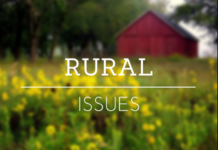Natural disasters, like tornadoes and severe storms, are things we don’t like to think about until necessary. But in Missouri, being prepared for spring storm and tornado season is a necessity, according to a University of Missouri Extension emergency management specialist. Missouri ranks tenth in the number of major disaster declarations.
“Missourians need to understand emergency preparedness is their responsibility. The Red Cross, the state and FEMA are not going to take care of you. They will come to your aid when they’re needed at some point,” said Eric Evans, community emergency management specialist. “But it’s your responsibility to take care of your family, yourself and your pets and be ready for the next impending emergency.”
Families need three things to be prepared for weather emergencies:
- Family disaster plan
- Weather radio
- Emergency supplies
“Probably the most important thing you can do for your family is have a family disaster plan that tells everyone in the family what you’re going to do when an emergency occurs,” Evans said.
The plan should include checklists, contact information for doctors, insurance plans, pharmacies, veterinarians and an out-of-state contact. MU Extension publication, Family Disaster Plan (EMW1011), can be downloaded and completed by hand or electronically.
Weather radios, which cost less than $30, should be in every home, church and public gathering place, especially in communities that do not have emergency warning sirens. “Most areas rely exclusively on weather radios,” he said.
Weather radios can be programmed to broadcast alerts for watches or warnings for a specific geographic area. The battery backup ensures that the radio will sound even if the electricity goes out. Like other safety equipment, Evans recommends testing it regularly to ensure that it will go off when needed.
“It’s very loud. It will wake you up in the middle of the night,” Evans said. “I have ours programmed for watches and warnings, so I can have more notice and get the family prepared.”
Finally, families should have a disaster kit that includes the disaster plan and emergency supplies. The kit should be easily accessible so you can grab and go when there is an emergency, Evans said.
The supplies will allow you to survive for a few days on your own by having the “the things you need to get yourself settled and back in groove, and then you can move forward and start implementing your plan and recovering from the disaster.”
Items in a basic disaster kit should include flashlights, extra batteries, a battery-operated or hand-crank AM/FM radio, a first-aid kit and water. Work gloves, sturdy footwear, toiletries and tools to turn off utilities are other items that can be included.
When putting together an emergency supply kit, remember pets and people with specific needs including babies, the elderly and those with medical conditions.
“Anyone with a functional need, and there are a lot of them, should go through the process of understanding how vulnerable they are during a hazard like severe weather,” Evans said. “That means putting together plans and maybe even buying the right things to put in the kit that make them able to survive for a short period of time during the aftermath of an emergency.”
One thing most people forget to include in a disaster kit is money.
“You may need access to cash in case there’s something you absolutely need to have and it’s a cash economy,” Evans said. “If it is a large-scale event and there is no electricity, you’re not going to get gas out of the ground, you’re not going to get money out of the ATM, and credit cards won’t work.”
Disaster kits can be assembled over time, buying a few things at a time, but it’s a worthwhile investment.
“By having these things in place, it makes recovering psychologically so much easier. The stress is so much less and everyone gets through the emergency with much more ease,” said Evans. “You’re able to function. Everyone knows what they’re doing because you have a plan, you have all your supplies. You’re going to be fine.”
A list of recommended items for disaster kits is available from MU Extension.
For more information on this topic, see Emergency Management on the MU Extension website.
Story source: Eric Evans, 573-884-8984




